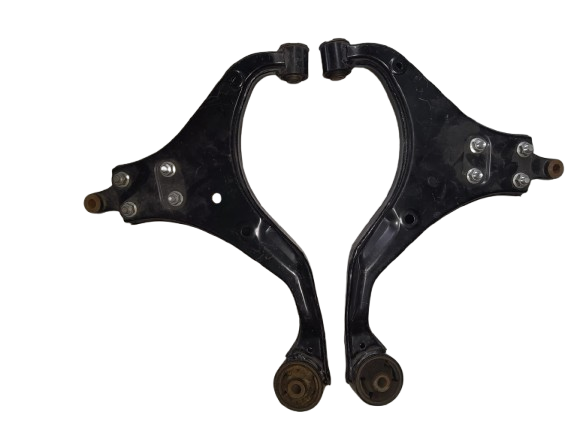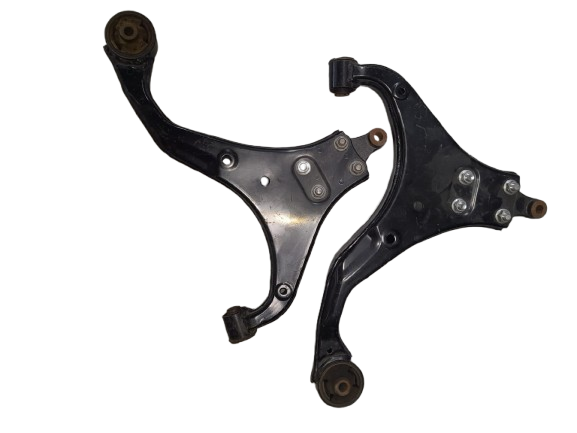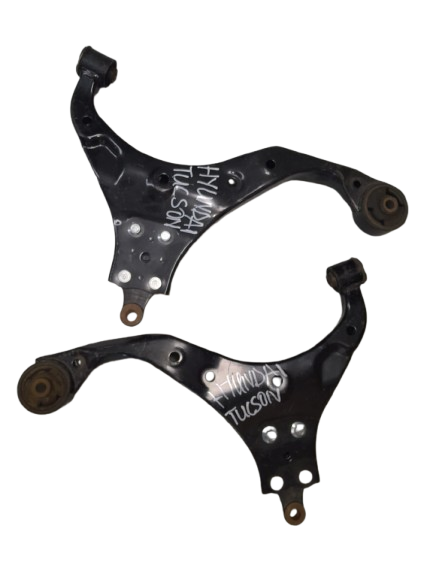


Overview
The front control arms of a Hyundai Tucson are crucial suspension components designed to connect the vehicle’s frame to the front wheels. These arms are typically made of high-strength steel or aluminum and are engineered to withstand the stress and forces experienced during driving. The control arms work in conjunction with ball joints and bushings to maintain proper wheel alignment, ensure a smooth ride, and allow controlled movement of the suspension system.
In the Hyundai Tucson, whether it’s a compact crossover from earlier model years or a more modern version with updated suspension geometry, the front lower control arms play a vital role in driving dynamics, handling, and overall comfort.
Functionality
The front control arms primarily serve two purposes:
- Wheel Alignment and Positioning: They keep the wheels in proper alignment with the road, preventing unwanted camber or caster angle changes that could result in uneven tire wear.
- Suspension Articulation: They allow the up-and-down motion of the suspension system while keeping the wheel’s lateral movement in check. This is especially important for handling rough roads and absorbing road impacts.
The control arms pivot on bushings at one end and connect to the steering knuckle via a ball joint at the other end. This setup provides a flexible, yet controlled, connection that enhances driving stability.
Construction and Materials
Hyundai Tucson front control arms are typically constructed from forged steel or lightweight cast aluminum for corrosion resistance and durability. The arms come pre-installed with rubber or polyurethane bushings and may also include a ball joint depending on the design.
- Steel Control Arms: Durable, affordable, and excellent for rugged driving.
- Aluminum Control Arms: Lighter in weight, which can improve fuel efficiency and handling, but generally at a higher cost.
Common Signs of Wear
Control arms are subject to wear and tear over time. Common symptoms of worn front control arms include:
- Clunking noises when driving over bumps
- Uneven or premature tire wear
- Steering wheel vibrations
- Poor alignment or wandering steering
- Decreased braking stability
If any of these symptoms occur, it’s essential to inspect and potentially replace the control arms to ensure safe and optimal vehicle performance.
Replacement and Compatibility
Replacement front control arms for the Hyundai Tucson are widely available for various model years and trims. They are typically sold as individual parts (left or right) or as a pair. OEM (Original Equipment Manufacturer) and high-quality aftermarket options are available, designed to meet or exceed factory specifications.
Before purchasing, ensure compatibility with your Tucson’s specific model year, engine type, and drivetrain (FWD or AWD).
Conclusion
Front control arms are a vital component of the Hyundai Tucson’s suspension system. Replacing worn or damaged arms improves ride quality, steering precision, and overall vehicle safety. Whether you’re restoring factory handling or upgrading to performance-grade components, quality front control arms are an investment in your Tucson’s performance and longevity.
